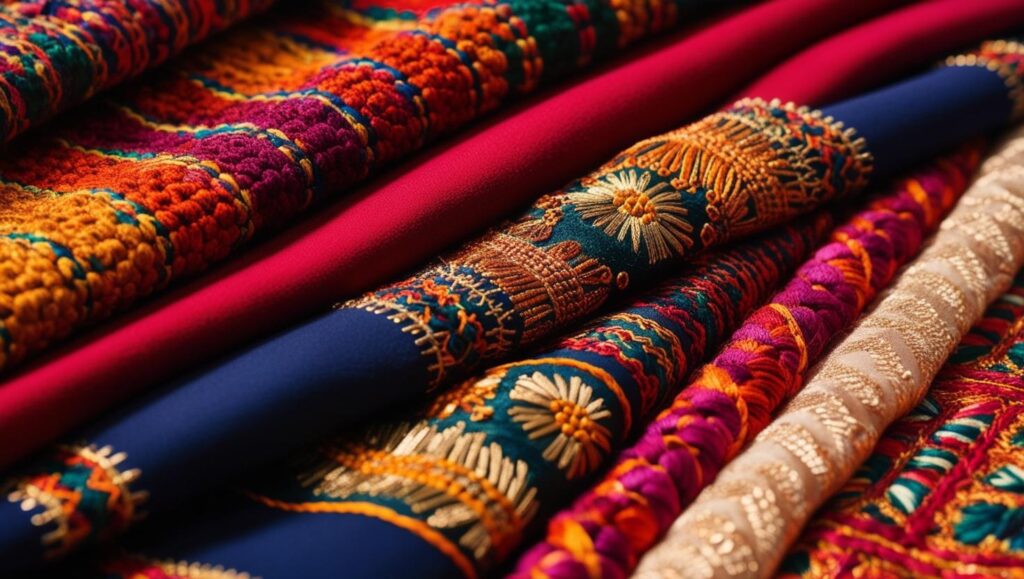In fashion design, textiles are one of the manners of translating this creative idea into some sort of reality. Fabrics are so much more than just materials to work with-in fact, they are quite literally the building blocks on which the whole garment is to be built. Understanding the textiles is pretty important in stitching a couture dress or even creating casual wear.
From the recognition of a specific behavior of each fabric, the art of choosing textiles is an art in itself: weight, drape, texture, flexibility-from silky fabrics that barely glide against skin to structured denim holding their shape, each adds character and aesthetic feeling to your designs. Think of it more like an empty canvas: your choice of fabric will set the tone for the whole piece of clothing.
In Fashion Design One Year Foundation course, you will realize how huge the concept of textiles is when it comes to bringing into reality various ideas that you can have in fashion designs. Be it the making of ready-to-wear items or haute couture, an excellent understanding of textiles is basically your first step toward perfection.
How Does Embroidery Change Fashion?
As would not be surprising, embroidery leads your mind to detail; it is much more than a dress feature. That kind of craftsmanship puts texture and color into this garment, raising simple cloth to something highly personal, indeed an artwork. It shows how to use this art through great creativity while infusing dimension with your ideas.

You will learn how to tell stories through embroidery in the context of a One Year Foundation certification in Fashion Design. From flowers stitched by hand to geometric patterns made by machines, the outcomes can be endless. Anything from lustrous silk to strong cotton-no fabric is barred for this form of art, which fuses texture with visual interest perfectly.
The thing that is really appealing about embroidery is its cultural history. Every stitch has something to say, and as a designer, you stand precisely at the leading edge of merging tradition with modernity. Just imagine working your way through different cultural techniques, from traditional Japanese sashiko stitching to bold African embroidery designs. The expertise about various types of embroidery gained within the compass of different foundational certifications is an important skill set that gives one a distinguished position within the fashion world.
Why learn this art of putting together the textiles with embroidery?
The magic lies here. A mix and match of various fabrics in different manners of embroidering give birth to exclusive and unique designs that make an individual stand out in the crowd. Imagine a velvet gown with intricate threadwork or a denim jacket brought to life with colored bead embroidery.
These you would be able to experiment with when on a One Year Foundation in Fashion Design. The trick is always in the balance of texture, visual weight of the fabric against the intricacy of the embroidery. Too much embellishment overpowers a design; too little makes it flat. It takes practice to find that sweet spot, but once mastered, your designs speak for both your technical and creative skills.
First and foremost, it would be playing with different kinds of embroidery on various textiles to see how they marry well. You can start doing simple hand-embroidered pieces on cotton to really intricate patterns with things like leather or lace. The experience of this doing is so intrinsically a part of your development as a fashion designer; it is one to which you will refer time and again in your certification.

How might a foundation certificate guide your learning in textile and embroidery skills?
A one-year foundation in Fashion Design is a great deal far away from mere learning of stitching and even drawing, actually setting someone up with the ways in which life might demand. Special focus on textiles and embroidery adds to practical knowledge; at the same time, such details allow seeing into the very building blocks of fashion design and their interaction within every other area of work that one performs.
It would cover the basics of fabric choice, the basic science behind the various textiles, and an overview of embroidery in the first year. You learn how to apply your knowledge through practical sessions of training appropriately in choosing materials given any specific design, meaningfully applying your embroidery, and creating your own personal style as you build upon the preceding techniques.
At the same time, you will also be able to go all the way in taking creativity to another level. For either conceptual or ready-to-wear, from what you have gained and develop insight through accomplishing textiles and embroideries – it actually carries one leap over imagination, it helps learning in letting go of things.
Conclusion
Once you’ve completed your One Year Foundation certification in Fashion Design, the real journey begins. Fashion is constantly evolving, and the skills you’ve learned are just the start of what can become a lifelong creative exploration. After your certification, consider exploring more advanced embroidery techniques, mastering sustainable textile practices, or experimenting with digital tools for design.
You need to have a portfolio, build pieces, include the textiles knowledge with an embroidery base of skills within your work; and this just occurs over time. As soon as your signature starts to emerge and these blocks finally begin evolving to speak, there is some part of themselves people are hearing; actually, this is rather an aspect of one’s capability, more related to placing just that little in themselves into their designs.
Take inspiration from the world outside: play with fabrics and never stop pushing to the edge with what textiles and embroidery can be used for. After all, fashion design is just as much about innovation as it is about traditions-and if properly founded, then indeed it’s a case of the sky being the limit.


